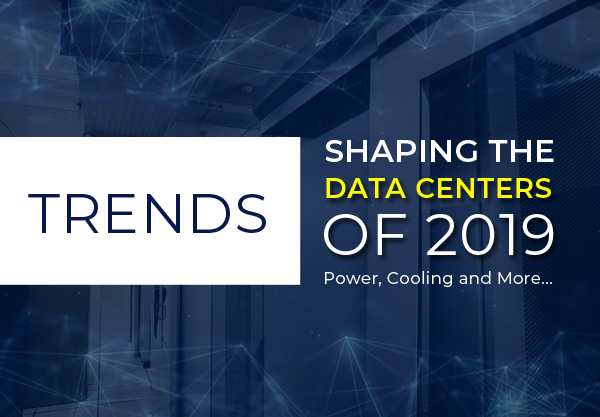Trends come and go, but only a few are capable of bringing about significant changes in processes. The trends that raise standards are appreciated by the consumer. Changes are inevitable whether in life or in businesses and data centers are not indifferent to the consistently changing market trends and consumer demands. Change and IT go hand in hand, it is safe to assume that inclusion of newer trends will keep data centers relevant. Talking about changing trends, here is a list of trends that will shape the dynamics of data centers in 2019.
- Power consumption:
According to a recent report by CNN business, China’s data centers emit carbon equivalent to 21 million cars, which is critically environment damaging to say the least. As per the report, 99 million metric tons of carbon dioxide were generated by China’s datacenters in 2018 alone. Moreover, data centers consume around 3% to 5% of global electricity. If these numbers are believed to be true, we really are contributing to the devastation of humanity.
Since the wave of green datacenter initiatives is strong, we will see a rising trend in efficient power consumption and cooling technologies. Today’s datacenters are adopting advanced power management and distribution solutions that help attain energy efficient processes. Facebook in 2018 built a hyper-scale datacenter in Singapore that supports 100 percent renewable energy. The data center uses a new state point liquid cooling system, which minimizes water and power consumption by up to 20%. This brings us to the next point that is the introduction of liquid cooling to data centers this year.
- Cooling: Liquid cooling finally seems to makes its way into the masses, thanks to the heavy workload put by AI inclusion. Also, industry giants like Google investing in the technology for its AI has finally given it a meaningful momentum. Another big reasons for this gain in momentum for liquid cooling was from the 15-megawatt deal that Skybox datacenters signed last year. The deal was to deploy a ginormous cooling project for down under GeoSolutions in Houston.
- Climate change: The climate is changing drastically with flooding and violent storms becoming a common feat these days, it is necessary that datacenters reassess their resilience planning. According to Uptime’s report even if the facility sails out of catastrophes unharmed, it will suffer from local infrastructure damage, power supply issues, and more.
- Hyperscaling goes big: Hyperscaling was a big trend in 2018 and continues to do so in 2019 as well. Hossein Fateh (founder of CloudHQ) predicts that by 2022 the industry will see 350 megawatt campuses. CloudHQ in 2018 reportedly signed a 72 megawatt lease in Ashburn, which is the largest deal in Data center history till date. And if sources are to be believed the industry will also see 100 megawatt deals in 2019.
- 5G: The highly anticipated 5G is the next big thing when it comes to technology. 5G is much revered for its capabilities. It can support associated devices up to 100 times more, 1000 times more volume and 10 time lower latency. Thus, 5G will make its way in to datacenters around 2020 and for good.
- Security concerns: With technological advancements, we will definitely also see more security issues on the clock. The increased implementation of IoT is also increasing cyber threats across the digital world. GDPR (General Data Protection Regulation) will also be a major implementation seen throughout the data center industry in 2019.

